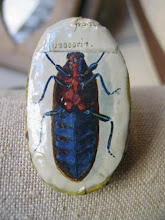Per tutti coloro che si sono chiesti e ci hanno chiesto da dove viene il nome “Il cervo bianco”…
.......................................................
For all people asking where the name “Il cervo bianco” (“The white deer”) comes from…La simbologia del cervo bianco è presente nella tradizione di molte antiche culture. A partire dall’epoca degli ittiti fino ad arrivare a quella agli atzechi, dove era considerato un simbolo ultraterreno di purezza analogamente all’unicorno, il simbolo del cervo trova successivamente un suo significato anche in alchimia dove rappresenta lo zolfo ed incarna l' anima. Questo viene infatti visto come simbolo del rinnovo vitale, dato che l’animale cervo rinnova spesso le sue corna.
La sua immagine letteraria ha goduto di particolare fortuna nel medioevo. Ispirandosi alle rappresentazione dei classici greci, l’immagine acquista la sua consacrazione nell’ ”Erec” di Chrètien de Troyes (colui che ha scritto anche il Parceval), per diffondersi a tutto il ciclo arturiano, nell’epica rolandiana e successivamente a alle tradizioni folkloristiche e popolari. Nella tradizione arturiana, in particolare quando il cervo bianco appare nelle foreste attorno alla corte di Re Artù e incita i cavalieri all’avventura…
E’ così che è entrata a far parte anche di alcuni autori italiani come Petrarca, Boccaccio e Poliziano. Inoltre dallo studio e l’accostamento dei testi emerge come il Cervo fosse spesso identificato quale guida magica, talvolta miracolosa.
……........................................................
The symbol of the white deer is present in the old tradition of many ancient cultures, since the 2000 b.C. It generally represents the purity, like the unicorn. It has a meaning also in alchemy where it represents the sulfur and embody the soul. The literary image was particularly famous in the middle-age where the inspiration came from the ancient greek literature. The definitive statement was reached with “Erec” from Chrètien de Troyes and further with the arthurian literature, until to be extended to the folk traditions. By the way also some Italian author like Petrarca, Bocaccio and Poliziano referred to this special symbol.
The symbol of the white deer is present in the old tradition of many ancient cultures, since the 2000 b.C. It generally represents the purity, like the unicorn. It has a meaning also in alchemy where it represents the sulfur and embody the soul. The literary image was particularly famous in the middle-age where the inspiration came from the ancient greek literature. The definitive statement was reached with “Erec” from Chrètien de Troyes and further with the arthurian literature, until to be extended to the folk traditions. By the way also some Italian author like Petrarca, Bocaccio and Poliziano referred to this special symbol.














